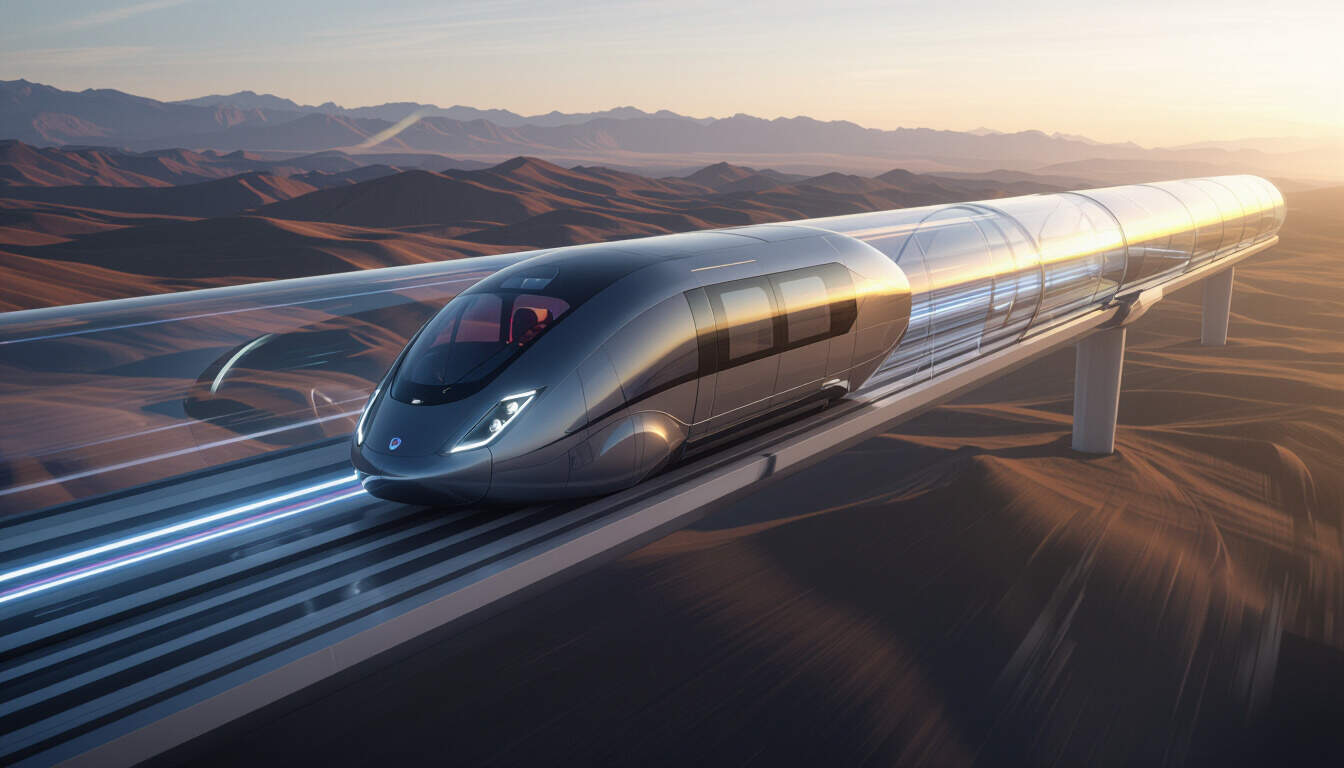Exponential Feedback Cycles in Hyperloop Transportation
 by Marlene Keeling
by Marlene Keeling
Hyperloop transportation represents a leap in speed and efficiency, driven by exponential feedback cycles that fuel technological progress. This article explores how these cycles enhance innovation in tech, business strategies, and individual growth, offering insights for entrepreneurs and scientists alike.

Hyperloop transportation stands as a prime example of how innovation can reshape travel. This system uses low-pressure tubes to propel pods at high speeds, potentially transforming how people and goods move across distances. In technology, feedback cycles play a key role, where each improvement leads to faster advancements.
Feedback cycles in tech often begin with initial prototypes. For Hyperloop, early tests provide data that engineers use to refine designs. This process creates a loop where successes build upon each other, leading to exponential gains. Hyperloop itself demonstrates this, as iterative testing accelerates development timelines.
One area where these cycles shine is in material science. Engineers select advanced materials to withstand high speeds and pressures. As tests yield results, materials improve, which in turn allows for safer and faster prototypes. This back-and-forth enhances overall system reliability, showing how small changes can compound over time.
In business, Hyperloop offers opportunities for growth through similar cycles. Companies investing in this technology can see returns as demand for efficient transport rises. For instance, partnerships between firms and governments create investments that fund further research. These investments then generate more data and innovations, forming a cycle that boosts economic value.
Business leaders can apply these principles to their strategies. By analyzing performance metrics from pilot projects, they adjust plans to maximize efficiency. This approach ensures that resources are allocated effectively, leading to sustained growth. Feedback cycles in business mean that early successes attract more funding, which supports larger-scale implementations.
On a personal level, working on Hyperloop projects can foster individual development. Scientists and engineers involved gain skills through hands-on experience. As they solve challenges, they build expertise that applies to future endeavors. This personal progress mirrors the larger cycles, where learning from one project informs the next.
The Impact on Daily Life
Hyperloop's potential extends to everyday applications. Imagine reducing travel time between cities from hours to minutes. This change could alter commuting patterns and open new markets. In this context, feedback cycles help refine user experiences, making the system more accessible over time.
For entrepreneurs, adopting a mindset of continuous improvement is essential. They might use data from initial launches to iterate on business models. This method ensures that ventures remain adaptable in a competitive landscape. Transportation innovation like Hyperloop shows how these cycles can lead to broader industry shifts.
In personal development, individuals can draw parallels from Hyperloop's evolution. Setting goals and reviewing progress regularly creates a personal feedback loop. For example, a scientist tracking research outcomes can adjust methods to achieve better results. This practice builds resilience and expertise, much like the technology's iterative process.
Challenges and Opportunities
While promising, Hyperloop faces obstacles such as regulatory hurdles and high costs. These challenges, however, can fuel feedback cycles. Each setback provides lessons that lead to better solutions. Overcoming them strengthens the project's foundation and paves the way for wider adoption.
In technology, integrating Hyperloop with existing infrastructure requires careful planning. Feedback from simulations helps identify integration points, ensuring seamless operations. This step-by-step refinement is crucial for long-term success.
Business-wise, scaling Hyperloop involves expanding networks. Companies can use market feedback to prioritize routes, focusing on high-demand areas first. This targeted approach maximizes impact and drives further investment. Exponential growth in this sector relies on these informed decisions.
For personal growth enthusiasts, the Hyperloop story inspires a proactive attitude. By embracing challenges, individuals can turn experiences into stepping stones. This mirrors how feedback cycles turn obstacles into opportunities, fostering continuous improvement.
Looking Ahead
The future of Hyperloop transportation is bright, with potential to influence global connectivity. As feedback cycles continue, we can expect even greater efficiencies. This evolution will likely inspire other sectors, from energy to urban planning.
In summary, Hyperloop exemplifies how feedback cycles drive progress across technology, business, and personal spheres. By leveraging these dynamics, stakeholders can achieve remarkable outcomes. Whether you're an entrepreneur seeking new ventures or a scientist pushing boundaries, the lessons from Hyperloop offer valuable insights for sustained advancement.
